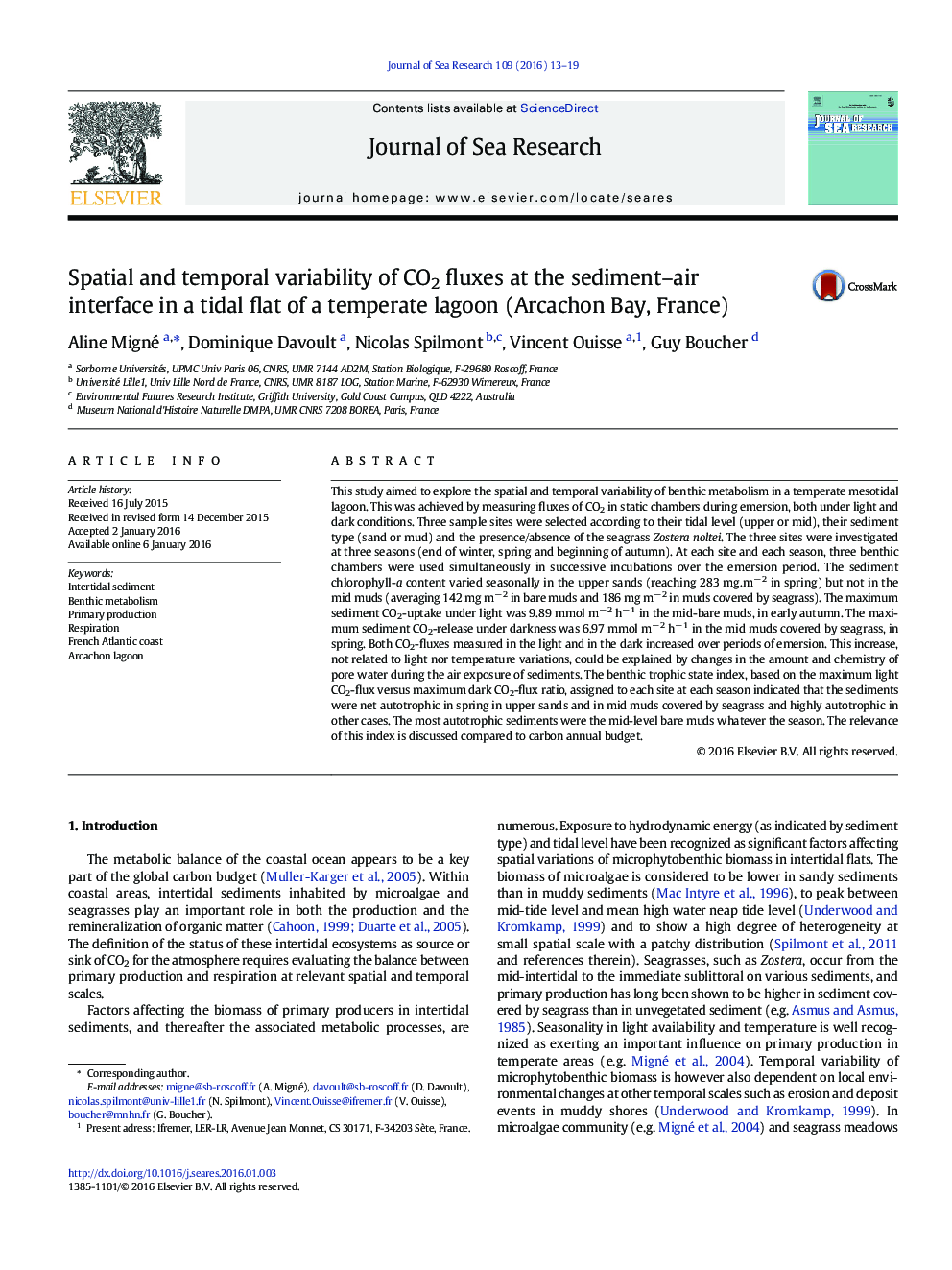| Article ID | Journal | Published Year | Pages | File Type |
|---|---|---|---|---|
| 4549563 | Journal of Sea Research | 2016 | 7 Pages |
•We explore spatial and temporal variability of benthic metabolism in tidal sediments.•CO2 fluxes were measured from static chambers, at low tide, under light and darkness.•Fluxes varied over emersion, maybe due to changes in pore water amount and chemistry.•Higher net production was measured in bare mud than in seagrass meadow.•Persistent autotrophy was observed in upper sands, mid-bare muds and Zostera meadow.
This study aimed to explore the spatial and temporal variability of benthic metabolism in a temperate mesotidal lagoon. This was achieved by measuring fluxes of CO2 in static chambers during emersion, both under light and dark conditions. Three sample sites were selected according to their tidal level (upper or mid), their sediment type (sand or mud) and the presence/absence of the seagrass Zostera noltei. The three sites were investigated at three seasons (end of winter, spring and beginning of autumn). At each site and each season, three benthic chambers were used simultaneously in successive incubations over the emersion period. The sediment chlorophyll-a content varied seasonally in the upper sands (reaching 283 mg.m− 2 in spring) but not in the mid muds (averaging 142 mg m− 2 in bare muds and 186 mg m− 2 in muds covered by seagrass). The maximum sediment CO2-uptake under light was 9.89 mmol m− 2 h− 1 in the mid-bare muds, in early autumn. The maximum sediment CO2-release under darkness was 6.97 mmol m− 2 h− 1 in the mid muds covered by seagrass, in spring. Both CO2-fluxes measured in the light and in the dark increased over periods of emersion. This increase, not related to light nor temperature variations, could be explained by changes in the amount and chemistry of pore water during the air exposure of sediments. The benthic trophic state index, based on the maximum light CO2-flux versus maximum dark CO2-flux ratio, assigned to each site at each season indicated that the sediments were net autotrophic in spring in upper sands and in mid muds covered by seagrass and highly autotrophic in other cases. The most autotrophic sediments were the mid-level bare muds whatever the season. The relevance of this index is discussed compared to carbon annual budget.
